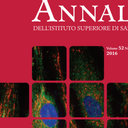Chlamydophila pneumoniae phospholipase D (CpPLD) drives Th17 inflammation in human atherosclerosis.
Mots clés
Abstrait
Phospholipases are produced from bacterial pathogens causing very different diseases. One of the most intriguing aspects of phospholipases is their potential to interfere with cellular signaling cascades and to modulate the host-immune response. Here, we investigated the role of the innate and acquired immune responses elicited by Chlamydophila pneumoniae phospholipase D (CpPLD) in the pathogenesis of atherosclerosis. We evaluated the cytokine and chemokine production induced by CpPLD in healthy donors' monocytes and in vivo activated T cells specific for CpPLD that infiltrate atherosclerotic lesions of patients with C. pneumoniae antibodies. We also examined the helper function of CpPLD-specific T cells for monocyte matrix metalloproteinase (MMP)-9 and tissue factor (TF) production as well as the CpPLD-induced chemokine expression by human venular endothelial cells (HUVECs). We report here that CpPLD is a TLR4 agonist able to induce the expression of IL-23, IL-6, IL-1β, TGF-β, and CCL-20 in monocytes, as well as CXCL-9, CCL-20, CCL-4, CCL-2, ICAM-1, and VCAM-1 in HUVECs. Plaque-derived T cells produce IL-17 in response to CpPLD. Moreover, CpPLD-specific CD4(+) T lymphocytes display helper function for monocyte MMP-9 and TF production. CpPLD promotes Th17 cell migration through the induction of chemokine secretion and adhesion molecule expression on endothelial cells. These findings indicate that CpPLD is able to drive the expression of IL-23, IL-6, IL-1β, TGF-β, and CCL-20 by monocytes and to elicit a Th17 immune response that plays a key role in the genesis of atherosclerosis.



